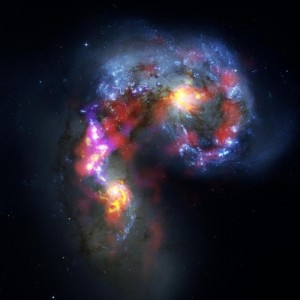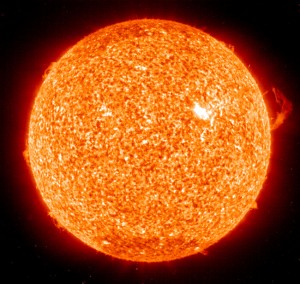One of the best places to put a telescope is in the Atacama Desert, which is on the boarder of Chile and Peru – currently there are around 20 telescopes (both radio and optical) functioning in the area.
The Alma telescope
In the last few days, the world’s largest radio telescope, the Alma telescope, has began to function. Currently the telescope is made up of around 20 massive antenna dishes, which work in harmony to produce amazingly detailed pictures of outer space.
The project has input from all around the world, with Europe, North America, East Asia and the Republic of Chile forming a partnership, all doing their bit to add more antenna dishes and improve the telescope.
When the project is completed, (hopefully within the next 20 years if all goes to plan) the telescope will have a whopping 66 dishes at its disposal, all of which it can use to gaze at the stars in fantastic detail!
Why the Atacama Desert?
You are probably wondering why the Atacama Desert is such a hotspot for telescope activity. Well there are a number of reasons, but the main ones are that it has clear skies almost all the time, in addition to very dry air – meaning that its hard for humans to breath there due to low oxygen levels, but for the telescopes, that means very little interference from anything in the space above.
Furthermore, the desert has many high flat areas, meaning that telescopes can be closer to the atmosphere, meaning even less interference. In addition to this, because the Atacama is a desert, it has virtually no light pollution. Basically it is an astronomer’s dream location!
Is it working?
The project has only been live for less than a week now, but already some stunning high detailed pictures of space area already beginning to emerge. Below is one of these great pictures:
Because the light we can see here on earth is often millions, if not billions of years old, we are able to see into the past when looking up at the sky, using super powerful telescopes like the Alma one.
Scientists believe that we will be able to see events that happened just 400 million years after the big bang, due to the light delay, hence enabling us to understand better than ever before the formation of the early universe.
The Alma telescope is just one small cog in our planets fascinating scientific road of discovery, however one thing’s for sure: this ‘small cog’ should be able to help us understand a lot more about the universe than ever before!




